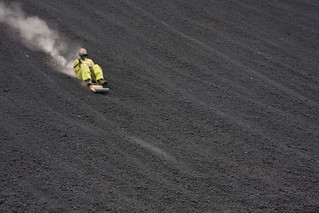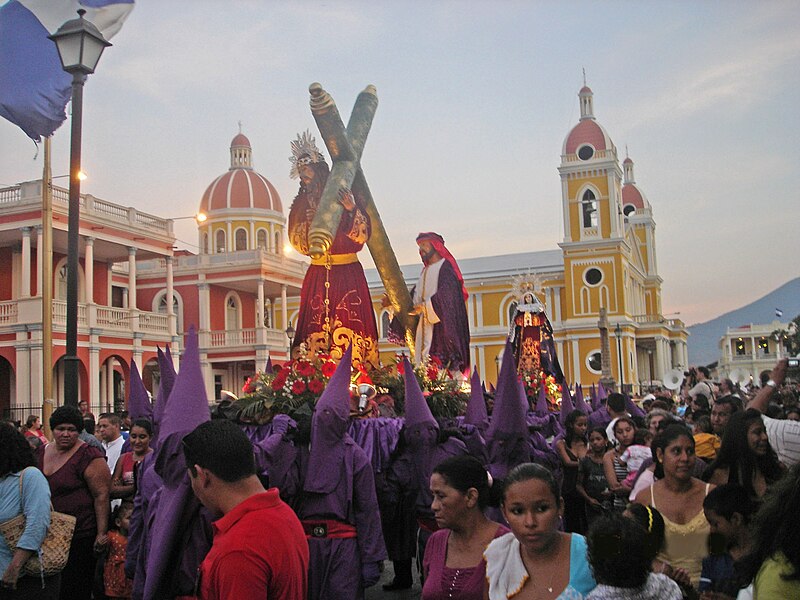Central America’s largest country was, not so many years ago, a staple of world headlines pretty much weekly for war and geopolitical intrigue. Yet despite its very flawed ruling régime Nicaragua today is peaceful, stable, and welcomes tourists of all stripes from around the world, with a growing tourism industry and infrastructure – reminiscent of, say, Costa Rica a generation ago, yet already offering a wide range of options from basic backpacker level to five-star luxury.
Capital Managua unsurprisingly boasts the country’s top nightlife, culture, and dining options, as well as a couple of key landmarks such as the National Museum and the ruins of the old cathedral (destroyed by a devastating 1972 earthquake), but it’s mostly a business destination, and much of the appeal for visitors looking to explore the essence of Nicaragua lies elsewhere.
As elsewhere in Central America, this appeal is about ecotourism, adventure travel, colonial cities and towns, and unspoilt beaches (including several that are especially gnarly for surfing). There’s a sizable expatriate community which has been the driving force behind building the hotels, hostels, tour operators, outfitters, restaurants, and other businesses catering to Nicaragua’s million-plus annual visitors, and you can be sure there’s more development on the way – but the government also says it’s trying to keep a lid on unfortunate overbuilding of the type that has afflicted certain zones of certain neighbouring countries.
Here are some of the highlights:
 The Great Outdoors The menu includes whitewater rafting, bird watching, ziplining, hot springs, and a bevy of volcanoes. Several of these last are pretty active – drive up to the rim of Masaya, a dozen miles south of Managua, and its sulphurous fumes will nearly blow out your sinuses, while at Cerro Negro outside the city of León (see below) you can “volcano surf” down the coarse black sand along the outside of its crater.
The Great Outdoors The menu includes whitewater rafting, bird watching, ziplining, hot springs, and a bevy of volcanoes. Several of these last are pretty active – drive up to the rim of Masaya, a dozen miles south of Managua, and its sulphurous fumes will nearly blow out your sinuses, while at Cerro Negro outside the city of León (see below) you can “volcano surf” down the coarse black sand along the outside of its crater.
Colonial Cities On Lake Nicaragua an hour south of Managua, Granada (pictured above during Easter week procession) is the country’s star, with a mix of colonial Spanish architecture. Meanwhile, locals go about their business alongside growing numbers of tourists who flock to adventure outfitters and gorgeous historic restaurants and boutique hotels. Also fairly close to Managua, traditional rival León is not quite as well preserved as Granada but still very appealing and lively (and also less touristy-feeling).
Rainforests, Coffee and Cigars The gorgeous highlands, rainforests, and cloud forests of Matagalpa, Chinandega, and Estelí, north of Managua, are home to producers of some of the Americas’ finest coffee and tobacco, and you can visit bio-reserves, farms, and eco-lodges large and small; I highly recommend the organic Selva Negra and the smaller, more remote Finca Esperanza Verde, both in the Matagalpa region. Also in that area is the birth home of the famous poet Rubén Darío.
Pacific Coasting Central America’s west coast boasts some of the hemisphere’s gnarliest surfing. That’s what helped turn it into the “Gold Coast” and transform San Juan del Sur (above) from a funky, sleepy fishing village into a funky, much less sleepy fishing village. Now there are dozens of beachfront eateries and bars and a bevy of bunking options from cold-water hostels to boutique inns and eco-resorts.
Island Time Over on the opposite coast, Corn Island and Little Corn are known culturally for their Jamaican-descended, Afro-Caribbean, English-speaking locals and otherwise for fishing, snorkeling, and the reggae-flavoured, barefoot simplicity of the mega-resort Caribbean. The fresh fish is to die for, and accommodations are small-scale and range from simple to luxury boutique. Crack a cold one at sunset and watch the manta rays at Anastasia’s on the Sea, out on stilts over the water.
The Lake Effect Speaking of volcanoes, when you’re in Granada, consider hopping a ferry out for an overnight or two on Ometepe Island, an hourglass-shape bit of business covering just over a hundred square miles. Essentially a pair of volcanoes connected by an isthmus, it’s got cute little towns, nature reserves, beaches, horseback riding, natural springs, and indigenous petroglyphs; lodging options include camping and simple but charming inns.
More information: Intur-Nicaragua Tourism Board.


Comments